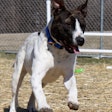Knowing the problems that are most commonly faced by pet owners and veterinarians is of vital interest to the petfood industry. This information can provide insight on the challenges faced and indicate where nutritional assistance might be beneficial. In a cross-section of surveys conducted in the past decade, a number of nutritionally-affected complaints were noted by pet owners.
How substantial are these problems? In the Morris Animal Foundation (1998) survey, dog owners were most concerned about skin disease (31%), nutrition (23%), digestive (11%) and urinary (12%) issues. For cat owners, urinary (48%), digestive (18%) and diabetes (9%) were prevalent concerns affecting the health and well-being of their pets. In a Danish survey regarding morbidity in dogs, skin (13.6%), gastrointestinal (10.9%), joint and skeletal (8.2%) and mouth/teeth (4.5%) were the leading nutritionally-related responses (Proschowsky, et al ., 2003).
Ralston Purina and Yankelovich Partners (2000) reported that digestive and dental problems each accounted for 3% of the health problems in dogs, whereas hairballs were 6% and urinary tract infections were 4% of cat health problems. Lund, et al. (1999) reported that dental (40%), dermatitis (11.2%), skeletal (5.5%), diarrhea and vomiting (4.3%) and obesity (2.0%) were the most prevalent nutritionally-associated disorders in dogs. For cats, dental (40.3%), diarrhea, vomiting and inappetance (5.5%), renal and urinary tract (4.9%), dermatitis (4%) and obesity (1.8%) were reported.
Of the various problems identified in the surveys, digestive disturbances (e.g., vomiting and diarrhea) were most common. Most of these diseases are multi-faceted in their cause, with very little of it due to diet.
Vomiting
Vomiting is sort of a catch-all term describing a number of different conditions. The common thread is the projection of esophageal, stomach or intestinal contents through the mouth and away from the body. Only a small proportion of vomiting is actually the result of something ingested. Vomiting can also be confused with regurgitation and retching. Food-related vomiting is often caused by indiscriminate consumption, changes in the diet, excessive consumption, overly rich or spicy foods, swallowing of un-chewed foods and consumption of indigestible materials and foreign objects. Caution regarding changes to diet, overindulgence and slowing the eating behavior by feeding in smaller, more frequent meals can often solve issues with vomiting in companion animals.
Hairballs
Hairballs are a common malady of cats, precipitated by the ingestion of hair during grooming. The etiology of this condition is little understood and the frequency so erratic that finding suitable test models can be difficult. There is also very little data in the literature describing the condition, treatment or prevention. In a recent publication describing five cats (four longhair and one shorthair) with recurring hairball problems, predisposing factors in this group included a long hair coat, flea allergy dermatitis, inflammatory bowel disease and ingestion of non-digestible plant material.
Dietary products for the control of hairball problems have become quite popular. In fact, three patents have been issued in recent years by the US patent office. Each represents a different dietary approach to prevent regurgitation of the hair mass and control its passage along the digestive tract by using enzymes, fiber, fats and/or emulsifiers. Since hairballs actually consist of a mixture of hair, mucous, food particles and mineral salts (Runnels, 1965), one approach taken was to hydrolyze the hairball mass with enzymes, and thereby reduce its size and impact.
Treats containing bromelain, an enzyme found in foods such as pineapple juice, were fed daily to cats with a history of vomiting hairballs. A reduction in the frequency of vomiting by 62.5% at one month and 81.3% at two months with no deleterious side effects was observed (US Patent #6,080,403). Another product (US Patent #6,383,529) proposed to increase passage rate and fecal excretion of hairballs, thereby reducing the opportunity for hair to collect in the gastrointestinal tract, by feeding a combination of fiber types. Cats fed a diet containing 6% beet pulp, 1.5% carboxymethylcellulose and 2% mineral oil had reduced hair shedding after four weeks on the experimental diet relative to cats fed other fiber treatments.
Hairballs are known to entrap undigested dietary fat (Qureshi, 1992). This accumulated fat can prevent gastric proteases and acids from gaining direct contact with the hairball. The premise of a third concept (US Patent #6,562,366) was to first use an emulsifier to weaken the fat mass, and then use proteolytic enzymes to further soften and digest the hair. In an in vitro study, their method enhanced hairball breakdown by 35%; however, no evidence that this method worked in vivo was offered.
A recent paper reported the effect of feeding cats with frequent hairballs a chew containing psyllium husks and slippery elm. After two weeks, reported hairball incidences decreased by greater than 25% (Dann, et al ., 2004).
Diarrhea
Diarrhea, like vomiting, is a physiological response which can result from various and sundry underlying conditions. Identification of the cause is important, because in many situations diarrhea is secondary to other disease processes. However, many owners point to the diet as the cause. In many instances they may be correct, but diet may also be the solution.
Published research in which selected ingredients, nutrients and/or diets have been fed to dogs or cats in an attempt to prevent the occurrence of these digestive problems is lacking. Clues may be found in clinical studies in which treatment has been attempted. Guilford, et al. (1998) reported that of 128 cats with recurrent pruritus, vomiting and diarrhea, three of 29 (10%) vomiting cats; four of 26 (15%) cats with diarrhea; and five of 12 (42%) cats with pruritus and diarrhea or vomiting were confirmed to be "food sensitive." Beef, lamb and viscera were the most common causative ingredients.
In another study of 55 cats with chronic vomiting and diarrhea, these problems were resolved in 16 (29%) food sensitive and 11 (20%) non-food sensitive cats with "selected-protein" diets (Guilford, et al ., 2001). In other words, a simple change in diet was beneficial for nearly half of the cats. In this study, beef, wheat and corn gluten were the most prevalent causative ingredients. Avoiding these "causative" ingredients in an "elimination diet" is a common tactic for resolving food sensitivities for both gastrointestinal and pruritic dogs and cats. But they aren't a one-size-fits-all solution.
Hydrolyzed or pre-digested proteins have been suggested as an alternative to the novel proteins found in elimination diets. Hydrolyzed soy transit is quicker and absorption is higher than for intact protein (Zhao, et al ., 1997) which, if the theory is correct, results in less time for the protein to become an irritation to the intestinal epithelium. Another possibility for their success is that these proteins are well below the effective molecular weight to be recognized as an antigen by the body. Several diets currently on the market purport this effect, but no direct evidence has been reported that this might have on reducing acute or chronic diarrhea.
It has been known for several years that feeding high levels of carbohydrates like lactose or tri-saccharide sugars (e.g., stachyose and raffinose) will escape digestion in the stomach and small intestine and cause flatulence and diarrhea as they are fermented by the colonic bacteria. It has also been understood for a number of years that properly-gelatinized (cooked) starch is critical to avoiding undigested grain reaching the colon and causing flatulence and diarrhea. The effects may be even more subtle. Adjustments to the proportion of energy from carbohydrate and protein, while not changing vomiting and fecal frequency, did improve fecal scores in cats with chronic diarrhea (Laflamme and Long, 2004).
There has been a great deal of research reported in the last decade on the effects of fiber in the GI tracts of both dogs and cats. The evidence is very convincing as it relates to stool consistency, stool volume, benefits to gut health with proper SCFA production by colonic bacteria and even the secondary benefits of a reduction in colonic pathogenic bacteria. It is often stated that fiber is beneficial for colitis, irritable bowel syndrome and regularity in humans. But, most of this work in companion animals has been done with healthy subjects. In one study, feeding a soluble fiber (psyllium) at two tablespoons daily to dogs with idiopathic large bowel diarrhea was shown to give a "good to excellent" result for 27 of 36 dogs (Leib, 2000).
Nutritional solutions
Digestive disturbances such as vomiting and diarrhea are common problems encountered by pet owners. Most of the underlying causes associated with these conditions are not nutritionally related or due to diet. However, for those that are food related, resolution can often be found with a change to the diet, increased diet digestibility and supplementation with soluble fibers.
Dietary and nutritional prevention is probable, but not well documented. Possible dietary preventive measures to consider are the development of novel ingredient alternatives, defined hydrolyzed proteins, addition of the proper amounts and proportions of soluble fibers, properly-gelatinized starch below digestive capabilities and possibly even anti-inflammatory long chain fatty acids.















